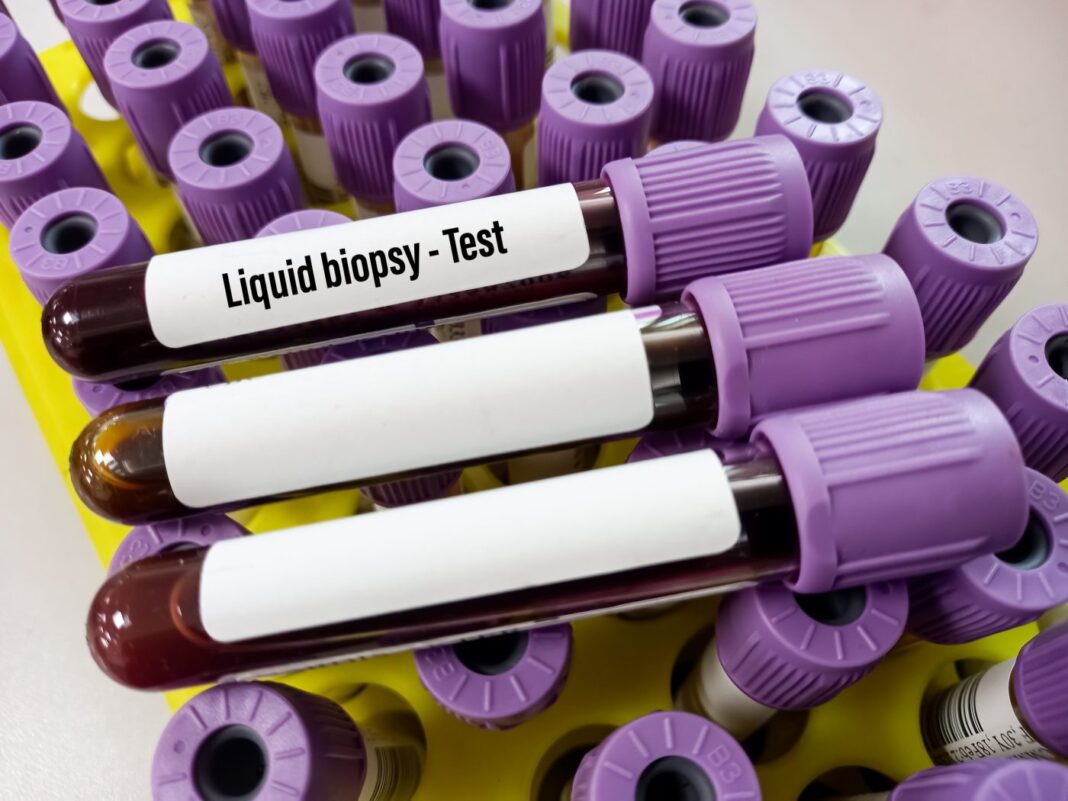Scientists at Mount Sinai in New York say they have validated for the first time that a liquid biopsy could be a better predictor of whether cancer immunotherapy will be successful for a patient with lung cancer than an invasive tumor biopsy procedure. Their study “Extracellular vesicle PD-L1 dynamics predict durable response to immune-checkpoint inhibitors and survival in patients with non-small cell lung cancer” appears in the Journal of Experimental & Clinical Cancer Research.
The liquid biopsy tests for a biomarker of PD-L1, a protein and target for checkpoint inhibitor immunotherapy, which helps the patient’s immune system attack and kill cancer cells. This study showed that testing the blood of lung cancer patients for the PD-L1 biomarker gave more accurate predictions of the response and survival for patients with lung cancer than testing for PD-L1 in tissue from lung cancer biopsies, the current standard of care.
The biomarker in blood, named EV PD-L1, comes from extracellular vesicles, which are particles shed from tumor cells. A decrease of PD-L1 in extracellular vesicles in blood could therefore become a useful test to predict which patients with non-small-cell lung cancer could benefit from immunotherapy.
“Immune-checkpoint inhibitors (ICIs) changed the therapeutic landscape of patients with lung cancer. However, only a subset of them derived clinical benefit and evidenced the need to identify reliable predictive biomarkers. Liquid biopsy is the non-invasive and repeatable analysis of biological material in body fluids and a promising tool for cancer biomarkers discovery. In particular, there is growing evidence that extracellular vesicles (EVs) play an important role in tumor progression and in tumor-immune interactions,” write the investigators.
“Thus, we evaluated whether extracellular vesicle PD-L1 expression could be used as a biomarker for prediction of durable treatment response and survival in patients with non-small cell lung cancer (NSCLC) undergoing treatment with ICIs. Dynamic changes in EV PD-L1 were analyzed in plasma samples collected before and at 9 ± 1 weeks during treatment in a retrospective and prospective independent cohorts of 33 and 39 patients, respectively.
“As a result, an increase in EV PD-L1 was observed in non-responders in comparison to responders and was an independent biomarker for shorter progression-free survival and overall survival. To the contrary, tissue PD-L1 expression, the commonly used biomarker, was not predictive neither for durable response nor survival.
“These findings indicate that EV PD-L1 dynamics could be used to stratify patients with advanced NSCLC who would experience durable benefit from ICIs.”
“These results will have an impact in the search for biomarkers to predict for immunotherapy outcome in patients with lung cancer as no truly reliable biomarkers have been found yet,” added senior author Christian Rolfo, MD, PhD, MBA, professor of medicine (hematology and medical oncology) at the Icahn School of Medicine at Mount Sinai, and president of the International Society of Liquid Biopsy. “If validated in larger prospective cohorts of patients, as we are working on now, this protein could complement or substitute for the tissue PD-L1 as the standard of care in these and other types of tumor patients receiving immunotherapy, especially because it is minimally invasive and can be repetitive during treatment, being able to detect changes in the tumor during the treatment in real time.”
This study, led by Rolfo, included collaboration of experts in radiomics and medical oncology from the U.S., Mexico, and Italy.3






